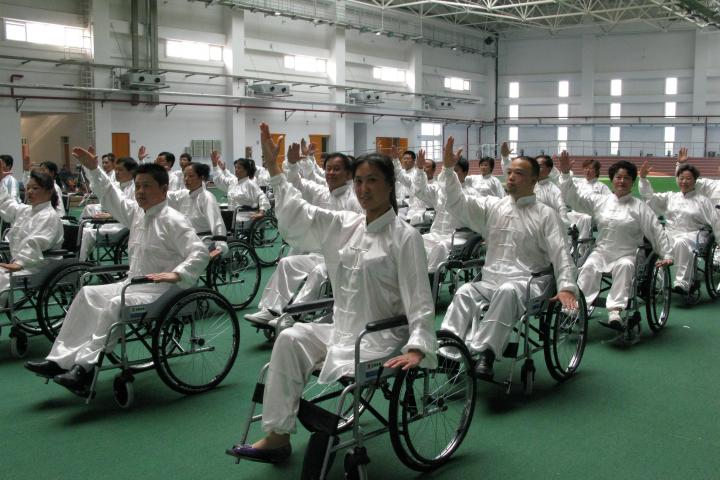Dr. Zibin Guo’s 13 Postures
Dr. Guo developed the 13 postures of W/ATCC to provide a practical, convenient, and empowering form of mind/body fitness sport for people living with ambulatory limitations. These postures can also be practiced as a stationary form (sitting in a fixed wheelchair or any other seat) which provides greater flexibility for anyone to practice Tai Chi without being concerned with space constraints. The practice of these postures can potentially have significant positive effects on veterans with both physical and psychological disabilities.
The 13 postures explained
The 13 postures aim to Integrate the mobility of wheelchair with Tai Chi movements and maximize the therapeutic effect on various parts of the body via the selected movements. Specifically, the forward rolling push of the wheelchair and the making of 90° or 180° turns at certain moves in Wheelchair Tai Chi enhances the dynamics and flow of the practice while promoting physical fitness and giving a certain artistic effect. More importantly, it transforms the image of the wheelchair as it is no longer serves-or is seen as-an assistive device, but serves-and is seen as-a tool for creating beauty and power. Thus, it gives practitioners a sense of uplift and empowerment that not inspires only them but also those who are watching.
Dr. Guo realized that not all movements in the traditional Tai Chi would be suited for people with ambulatory impairment because most moves are based on martial arts applications that involve ambulatory ability. Therefore, he selected 13 moves/postures from the most popular Taijiquan programs according to five criteria:
- moves suited for people with ambulatory impairment;
- moves that allow a large range of lower back/hip motion;
- moves that help promote upper body mobility and internal circulation;
- moves that combine both vertical and horizontal circles that improve and stimulate the rotation and range of the torso, waist, lower back, shoulders, arms, and wrists to give the practitioner also a sense of expandable space; and
- moves that help increase a sense of empowerment.
Given the success of the 13 postures training In 2007, the China Disabled Persons' Federation made an official request to all provincial organizations responsible for providing services for people with disabilities to promote the 13 Postures of Wheelchair Tai Chi in their regions. In 2008, Following Dr. Guo's collaboration with the China Disabled Peoples' Federation and the Beijing Paralympics Committee leading to the introduction of Wheelchair Tai Chi at the Beijing 2008 Olympics/Paralympics Cultural Festival, Wheelchair Tai Chi not only has been embraced by people with disabilities as a popular fitness and recreational programs throughout China, it has become part of China's national program to promote health.
